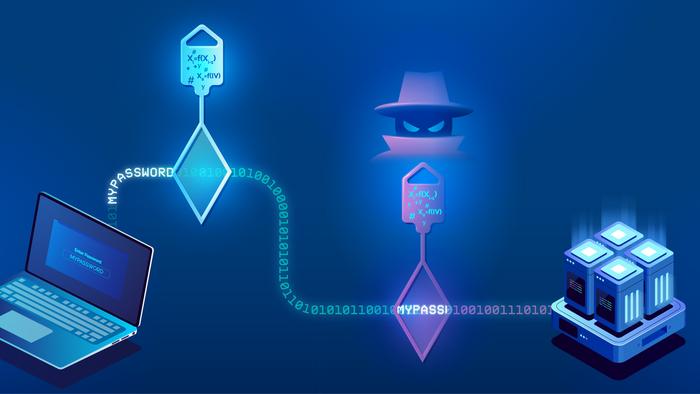A groundbreaking advancement in the realm of quantum technology has been unveiled by a collaborative team of scientists from King Abdullah University of Science and Technology (KAUST) and King Abdulaziz City for Science and Technology (KACST). Their research introduces the fastest quantum random number generator (QRNG) known to date, a monumental achievement benchmarked against international standards. This ultrafast device generates true random numbers at speeds nearly a thousand times greater than existing quantum random number generators, a feat verified by rigorous testing through the National Institute of Standards and Technology (NIST). Such progress is poised to revolutionize data security in an era increasingly dependent on cryptographic strength.
At the heart of this innovation is the principle of quantum mechanics, which provides an intrinsic unpredictability unattainable by traditional pseudo-random number generators (PRNGs). PRNGs rely on complex algorithms that simulate randomness but inherently possess deterministic patterns that can, theoretically, be decoded or predicted. The QRNG developed by the KAUST-KACST collaboration bypasses these vulnerabilities by harnessing physical quantum processes, ensuring each generated number is fundamentally unpredictable, thereby enhancing cryptographic protocols to unprecedented levels of security.
This leap in performance was achieved through ingenious engineering at the micro-scale, specifically employing micro-light-emitting diodes (micro-LEDs) that are mere micrometers in size. By reducing the physical dimensions of the light sources, the research team managed to significantly cut down the energy consumption of the device, an attribute that not only optimizes operational efficiency but also paves the way for portability. This miniaturization transforms the potential application matrix of QRNGs, extending their use beyond stationary, high-power environments to mobile platforms and embedded systems demanding robust, on-the-fly cryptographic key generation.
The newly developed QRNG underwent stringent validation processes, including passing the randomness tests set forth by the National Institute of Standards and Technology, an internationally respected authority for statistical and cryptographic assessments. These tests measure various statistical properties of the produced sequences, ensuring that the randomness output meets or exceeds established criteria essential for secure cryptographic applications. Achieving certification from NIST underscores the reliability and practical deployability of this next-generation random number generator.
Leveraging sophisticated post-processing algorithms was another critical factor driving the device’s performance to new heights. After capturing quantum-originated raw data, these algorithms refine and extract genuine randomness by filtering out extrinsic noise and systematic errors inherent in physical measurements. This meticulous data refinement ensures that the final bitstreams not only pass randomness tests but also maintain high fidelity for cryptographic utilization, thereby enhancing both speed and security without compromising integrity.
Professor Boon Ooi of KAUST, who spearheaded the project, highlights the immense significance of these developments for industries that rely heavily on fortified data protection frameworks. Sectors such as financial services, healthcare, defense, and telecommunication stand to benefit immensely from an infused layer of quantum-generated randomness, directly countering emerging cyber threats that exploit algorithmic weaknesses in existing PRNGs. As digital infrastructures evolve, this research represents a pivotal step toward securing information in the quantum era.
The operational principle of this QRNG employs micro-LED arrays to produce photons whose quantum mechanical behavior generates the inherent randomness. By measuring photon emission events and their corresponding quantum states, the device creates bitstreams that are immune to classical prediction or replication by adversaries. This approach meticulously utilizes quantum indeterminacy—an inherent property of particles at the quantum level—to ensure that each bit sequence is both authentically random and impossible to foresee.
Integrating these microscale light sources required advanced fabrication techniques to maintain device reliability and output quality. The researchers employed state-of-the-art semiconductor manufacturing methods, ensuring uniformity across the micro-LED structures and optimal coupling with the photon detection system. This synergy between fabrication precision and quantum physics was paramount in achieving the unprecedented speed and stability reported in this study.
The implications of this technology transcend mere data encryption. With its ultrafast generation rates and energy efficiency, micro-LED based QRNGs can be embedded within consumer electronics, Internet of Things (IoT) devices, and portable communication units, which traditionally faced limitations due to the bulky and power-hungry nature of standard quantum devices. This integration opens doors to widespread quantum-secure communication channels, fundamentally reshaping how everyday devices safeguard user data.
A key contributor to this project, Dr. Abdullah Almogbel of KACST, emphasized how this research aligns seamlessly with Saudi Arabia’s Vision 2030, which prioritizes innovation and global leadership in strategic technology sectors. By fostering cutting-edge quantum-enabled devices, KACST is positioning the nation at the forefront of applied quantum science, fueling economic diversification and cybersecurity resilience through homegrown technological excellence.
Moreover, this innovation stimulates further academic and industrial research into optimizing quantum device miniaturization and enhancing post-processing techniques. The intersection of microfabrication and quantum information science exemplified by this QRNG points to a future where quantum randomness becomes a foundational element in securing digital systems against quantum-enabled computational attacks—a looming challenge anticipated as quantum computing progresses.
In summary, the micro-LED based quantum random number generator developed by KAUST and KACST marks a transformative leap in quantum cryptographic technology. By achieving an unprecedented generation speed verified by NIST standards and delivering portability through low power consumption, the device promises to redefine data security paradigms across numerous sectors. As quantum mechanics continues to underpin next-generation cryptography, innovations like this pave the way toward resilient, scalable, and accessible quantum-secure infrastructures worldwide.
Subject of Research: Not applicable
Article Title: Micro-LED-based quantum random number generators
News Publication Date: 20-May-2025
Web References:
https://opg.optica.org/oe/fulltext.cfm?uri=oe-33-11-22154&id=571324
http://dx.doi.org/10.1364/OE.559375
References:
National Institute of Standards and Technology randomness tests
Image Credits: Heno Hwang (KAUST)
Keywords:
Quantum optics, Quantum cryptography




